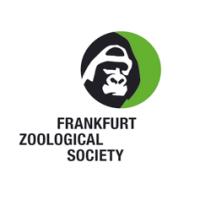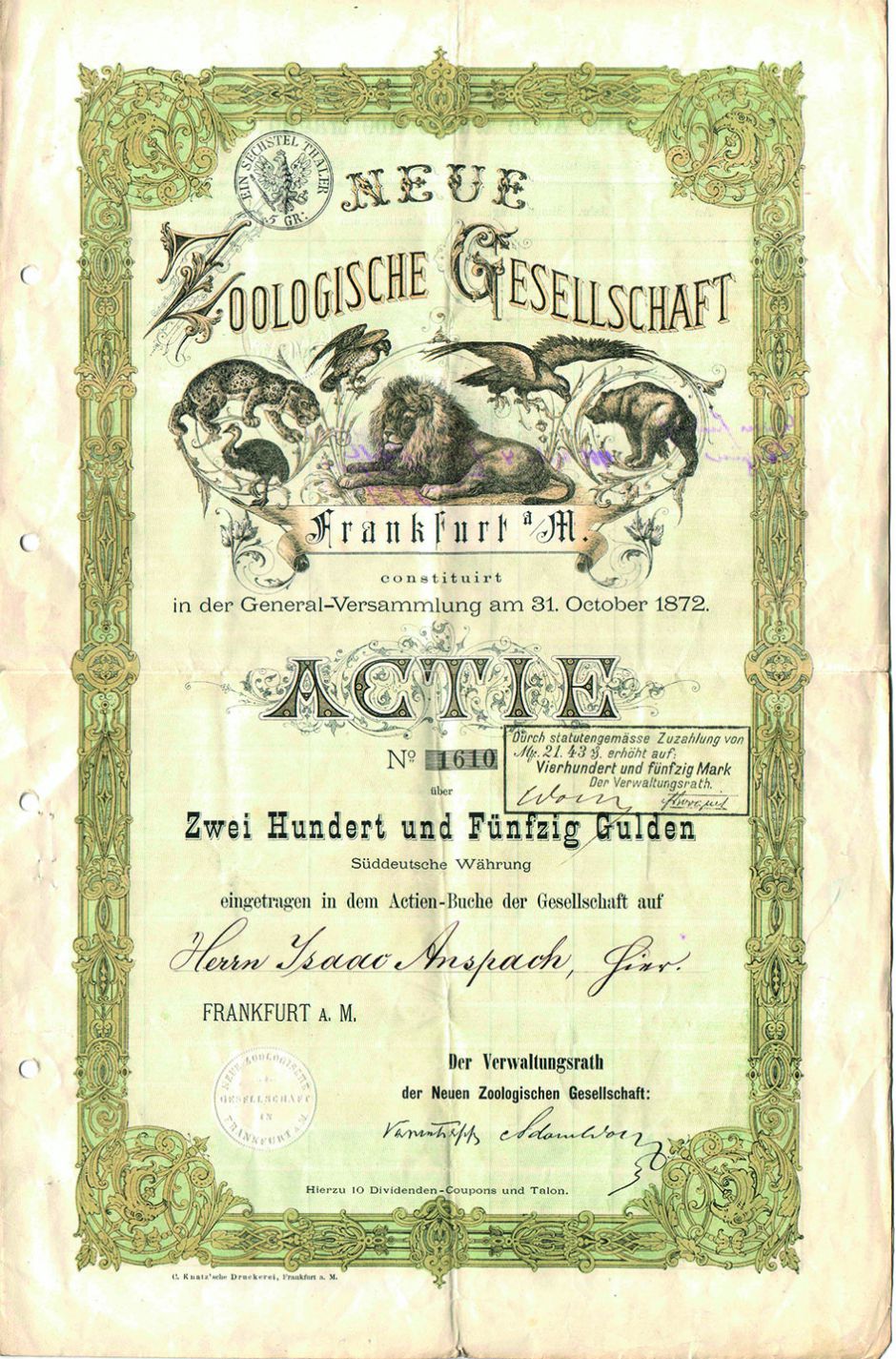Frankfurt Zoological Society
Protecting wilderness and conserving biodiversity..
Frankfurt Zoological Society (FZS)
FZS is an international conservation organisation based in Frankfurt in Germany, originally founded in 1858. After two World Wars Prof. Bernhard Grzimek was appointed as Director of the newly revived "Zoologische Gesellschaft Frankfurt" (Frankfurt Zoological Society).
The Serengeti National Park in Tanzania was the starting point of the Frankfurt Zoological Society's international conservation efforts. It's conservation work in many other parts of Africa goes largely unheralded and unnoticed, but contributes enormously to the long-term mainteneance of critical areas and should not be overlooked.ABOUT FZS
Frankfurt Zoological Society (FZS) is an international conservation organisation founded in 1858 with headquarters in Frankfurt am Main, Germany. FZS focuses on maintaining biodiversity and conserving wildlife and ecosystems in protected areas and outstanding wild places. FZS leads and supports about 30 projects in 18 countries. Bernhard Grzimek, renowned German zoo director, zoologist, book author, editor, and animal conservationist in postwar West-Germany, served as president of the Frankfurt Zoological Society for over forty years.
At the end of the 1950s Bernhard Grzimek launched what has since become a comprehensive programme consisting of some 30 projects dedicated to the protection of outstanding wilderness areas and national parks in 18 countries. The conservation focus of all FZS projects is on protecting wilderness areas and preserving biodiversity. All FZS programmes are oriented towards these two criteria.
FZS is active in biodiversity-rich areas in central and eastern Europe, in Africa, in central South America and in south-east Asia. The project countries in Africa are: Tanzania, DR Congo, Zambia, Zimbabwe and Ethiopia.
Africa
Traditionally, many FZS projects are located in Tanzania. Currently, FZS is engaged in the protection of the Serengeti,[3] the Selous[4] and the Mahale Ecosystem[5] and carries out research for the preservation of East Africas threatened habitats. Livestock and migration data is collected, rangers, scientists and veterinarians are educated and environmental education is promoted. Further projects are located in Zimbabwe (Gonarezhou sanctuary), Zambia (North Luangwa) and the Democratic republic of Congo (Virunga and Maiko Nationalpark).[6][7] Exemplary local partners are Tanzania National Parks Authority (TANAPA) and Tanzania Wildlife Research Institute (TAWIRI).
LIST OF PROJECTS IN AFRICA:
ETHIOPIA:
Bale Mountains Conservation Project - From the high plateau down to the rainforest: Protecting the teeming diversity of the Bale Mountains National Park and empowering local communities.TANZANIA:
Serengeti Conservation Project - providing critical support and know-how for resource protection, monitoring, and park management. Serengeti Ecosystem Management - Empowering local communities in the Serengeti ecosystem to engage in conservation while promoting conservation-compatible livelihoods Selous Conservation Project - supporting the protection of one of the largest remaining wilderness areas and a UNESCO World Heritage Site in Africa. Mahale Conservation Project - preserving tropical rainforest biodiversity and strengthening environmental security for local communitiesZAMBIA
Nsumbu Tanganyika Conservation Project - protecting the realm of the swimming elephants
North Luangwa Conservation Programme - protecting the North Luangwa Valley ecosystem - one of Africa's last intact wilderness areas.ZIMBABWE
Gonarezhou Conservation Trust - in conservation partnership with the Zimbabwe Parks and Wildlife Management Authority protects ‘the place of elephants’ - see Gonarezhou - a conservation partnership and Malilangwe Trust Rhino translocation to Gonarezhou National Park (video).
HISTORY OF FZS
The Frankfurt Zoological Society (Zoologische Gesellschaft Frankfurt) was founded in 1858 by Frankfurt citizens for the purpose of establishing a zoo. By the First World War it had become the zoo's operating company. After the War the zoo was funded by the city and the Aktiengesellschaft Zoologische Gesellschaft Frankfurt filed for insolvency in 1915. The Zoologische Gesellschaft was re-established as the Frankfurt Zoo's society of friends again in 1950. Due to Bernhard and Michael Grzimek’s animal surveys in the Serengeti in the mid 1950s, nature conservation became the secondary focus of support for the Society. Initial donations went towards the development of national parks in Africa. From that point onwards, FZS has made it its aim to protect and preserve endangered environments and animals the world over.
A zoo for Frankfurt
Courtesy: Ultimate Safaris, Namibia
Inspired by a growing interest in natural history in the early 1850s, a small group of Frankfurt citizens seized on the idea of building a zoo in the city. By 1857 all that stood in the way of a zoo was the approval of the city government. This concluded that keeping bears, wolves and wild board in suitable enclosures would give no cause for concern, and so the Society began to issues shares in October 1857. In the following months 246 shareholders invested a total of 80,000 Gulden in the project. The first general meeting on March 7, 1858 made it official - the Frankfurt Zoological Society was born.
The Frankfurt Zoo opened its gates just five months after the official founding of the Society. It was the second zoo in Germany. This "test zoo" was not located on the site of the current zoo, instead it was sited outside the city on a 15 acre plot of land just to the west of the Bockenheimer Tor on the Bockenheimer Landstrasse. The first few years of operation showed that a Zoo could survive in Frankfurt, and when the lease ran out on the Bockenheim site, the search began for a new home. For legal reasons it was necessary to form a "New Zoological Society," which then merged with the "Zoological Gesellschaft of 1858" at its first general meeting on October 31, 1873. It was the New Zoological Society that under constraints of time and money succeeded in building and relocating the Zoo to its present site. In February 1874 the animals could finally be moved from the Bockenheimer Landstrasse to Pfingstweide. Visitor numbers were well below expectations, however, and by late 1881 the Society would have faced insolvency if the city of Frankfurt had not stepped in with a refinancing plan. But matters only got worse, and the Society could only be saved in April 1888 when a new agreement was signed with the city. As of then the entire operative profit of the Zoo went to the city. The Frankfurt Zoological Society operated the Frankfurt Zoo until the First World War. The War ended discussions about a further relocation of the Zoo and the downturn in revenue soon left the Society bankrupt. In the summer of 1915, the city took over complete control of the Zoo and the Society was dissolved as a joint-stock company. But despite the demise of the Society as a legal entity, the shareholders continued to maintain their interest in and support of the Zoo. Many of them also remained active as friends of the Zoo in the spirit of the Zoological Society.The idea of nature conservation emerges
There was an important shift in thinking about zoos in 1923. For the first time, it was recognized that zoos could contribute to the protection of animals living in the wild. Already during the war years, zoo directors had feared for the survival of the wisent, a European bison species native to Germany. Frankfurt Zoo Director Dr. Kurt Priemel, who had collected information on these threatened animals, was named president of the newly founded "International Society for Wisent Protection." In 1923 he wrote, "All efforts toward the great and glorious goal of nature protection are doomed to remain half measures unless they are pursued on the basis of internationalism. Today, nature protection is not merely an inescapable challenge of our time, it has also advanced to become a generally accepted science." These words have lost none of their relevance today.
Heavy bombing during the night of March 18, 1944 destroyed nearly all of the files of the Zoo and the Zoological Society.The era of Bernhard Grzimek
On May 1, 1945, a veterinarian from Neisse in Upper Silesia was appointed director of the Frankfurt Zoo: Prof. Dr. Bernhard Grzimek. During his first years as director, he was primarily concerned with rebuilding the Zoo, which had been completely destroyed. Much of the necessary construction was only possible as the result of donations. It made sense to put the friends of the Zoo, who had begun to meet again regularly after the war, onto a legal organisational footing. On February 15, 1950, the "Gesellschaft der Freunde und Förderer des Zoologischen Gartens e.V." (Society of Friends and Supporters of the Zoological Garden) was founded which raised badly needed money for the Zoo in the form of collections, donations and lottery money. On the occasion of the centenary of the now defunct Zoological Society, the friends and patrons of the Zoo decided to change the name of their society and to revive the original name. Beginning in 1958 there was once again a "Zoologische Gesellschaft Frankfurt" (Frankfurt Zoological Society), amended shortly afterwards to "Zoologische Gesellschaft Frankfurt von 1858" (Frankfurt Zoological Society of 1858) - FZS for short.
The early post-war years found Grzimek and his son Michael travelling to Africa to observe, photograph and shoot documentary footage of animals in their natural habitat. These trips and the resulting realisation that only global protection can preserve wild animal populations became the new focus of the activities of the Frankfurt Zoological Society: nature conservation.
Following the death of Michael Grzimek in a tragic plane accident in east Africa, FZS established a memorial fund in his name in 1960. The fund was the precursor of the special trust set up in 1961: "Hilfe für die bedrohte Tierwelt" (Help for Threatened Wildlife). In his television programmes, Prof. Grzimek solicited donations to this fund, which formed the basis for the further work of FZS. The early work of the Society was concerned primarily with establishing a nature conservation infrastructure in East Africa, but soon further projects were launched in other regions of the world, such as the Galapagos Islands, South America and Asia - and back home in Hesse as well. Grzimek's popularity and his television series "Ein Platz für Tiere" (A Place for Animals) continue to generate many donations and above all bequests.The Presidency of Dr. Richard Faust
Particularly during the tenure of Dr. Richard Faust, FZS was gradually able to build up its endowment and to take on an increasing number of projects. By 2001, shortly after Faust's death, FZS was involved in roughly 70 projects, supporting nature conservation projects in 25 countries with an annual budget of approximately EUR 4 million.
A new milestone was passed on March 30, 2001 when a new foundation which had been backed by Richard Faust - "Hilfe für die bedrohte Tierwelt" (Help for Threatened Wildlife) - was officially launched. Approximately EUR 33 million stemming from the FZS assets were ploughed as capital into the foundation to secure the financial basis of FZS projects for all time.FZS and the Frankfurt Zoo
The Frankfurt Zoological Society and the Frankfurt Zoo are united by a joint history spanning more than 150 years. Although FZS’ main focus is on international conservation issues, it still has the function of supporting the Zoo. Any donations FZS receives specifically for the Frankfurt Zoo are used solely for that purpose.
Experiencing conservation
The “International Zoo and Aquarium Conservation Strategy” commits modern zoos to greater involvement and integration in conservation issues with the goal of their becoming an important “voice for conservation”. Two such projects being carried out in cooperation with the Zoo are “Global Conservation on a Local Scale” (April 03 – March 05) and “Conservation Ambassadors” (since November 05) / "Nature and Culture Ambassadors" (since April 2010). The aim of these projects is to alert the public to the necessity of international conservation work and to raise awareness of nature conservation as a cultural task.
The Zoo, with its scientific background, is an ideal place to reach young and old people from different social backgrounds while they are enjoying themselves in a leisurely atmosphere. As a globally functioning conservation organisation, FZS can provide many tangible examples of how to apply conservation measures successfully.Source: fzs.org and Wikipedia

